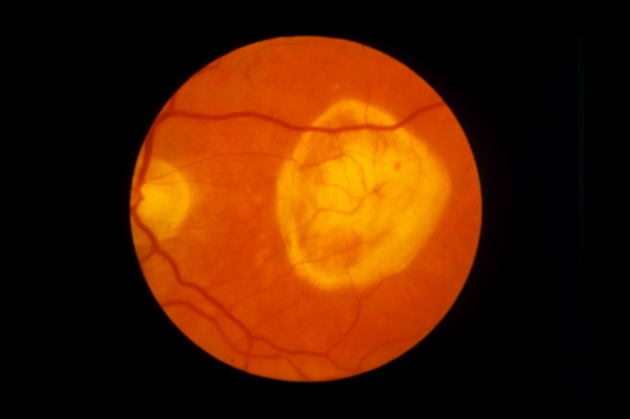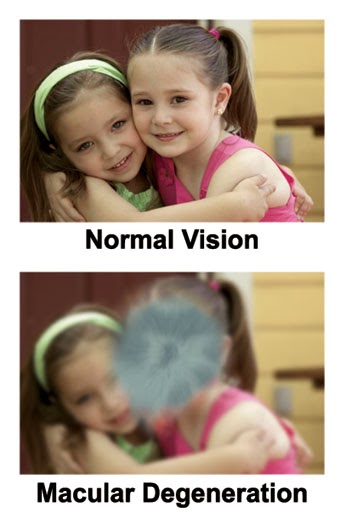Age-related macular degeneration (AMD) is the leading cause of vision loss and blindness in the elderly in the U.S. It’s estimated that some 11 million Americans could have some form of the disease, a number that is growing every year. So if you are going to develop a treatment for this condition, you need to make sure it can reach a lot of people easily. And that’s exactly what some CIRM-supported researchers are doing.
Let’s back up a little first. AMD is a degenerative condition where the macular, the small central portion of your retina, is slowly worn away. That’s crucial because the retina is the light-sensing nerve tissue at the back of your eye. At first you notice that your vision is getting blurry and it’s hard to read fine print or drive a car. As it progresses you develop dark, blurry areas in the center of your vision.
There are two kinds of AMD, a wet form and a dry form. The dry form is the most common, affecting 90% of patients. There is no cure and no effective treatment. But researchers at the University of Southern California (USC), the University of California Santa Barbara (UCSB) and a company called Regenerative Patch Technologies are developing a method that is looking promising.
They are using stem cells to grow retinal pigment epithelium (RPE) cells, the kind attacked by the disease, and putting them on a tiny synthetic scaffold which is then placed at the back of the eye. The hope is these RPE cells will help slow down the progression of the disease or even restore vision.
Early results from a CIRM-funded clinical trial are encouraging. Of the five patients enrolled in the Phase 1/2a trial, four maintained their vision in the treated eye, two showed improvement in the stability of their vision, and one patient had a 17-letter improvement in their vision on a reading chart. In addition, there were no serious side effects or unanticipated problems.
So now the team are taking this approach one step further. In a study published in Scientific Reports, they say they have developed a way to cryopreserve or freeze this cell and scaffold structure.
In a news release, Dr. Dennis Clegg of UCSB, says the frozen implants are comparable to the non-frozen ones and this technique will extend shelf life and enable on-demand distribution to distant clinical sites, increasing the number of patients able to benefit from such treatments.
“It’s a major advance in the development of cell therapies using a sheet of cells, or a monolayer of cells, because you can freeze them as the final product and ship them all over the world.”
Cool.


Would this help RP patients?
Hi Kendra, this particular approach is for macular degeneration which is different than RP. But the technique could theoretically be adapted to use different cells to help treat RP.
Can this also be used for RP
Hi Irving, this approach wouldn’t work for RP, they are tackling a different problem, but the technique itself might be adapted using different cells for RP.
Will this restore sight as I am legally blind from dry eye age related macular degeneration?
Hello David, we are hopeful the approach taken by Regenerative Patch Technology will ultimately prove beneficial for people with AMD, that’s what the current clinical trial is trying to determine.